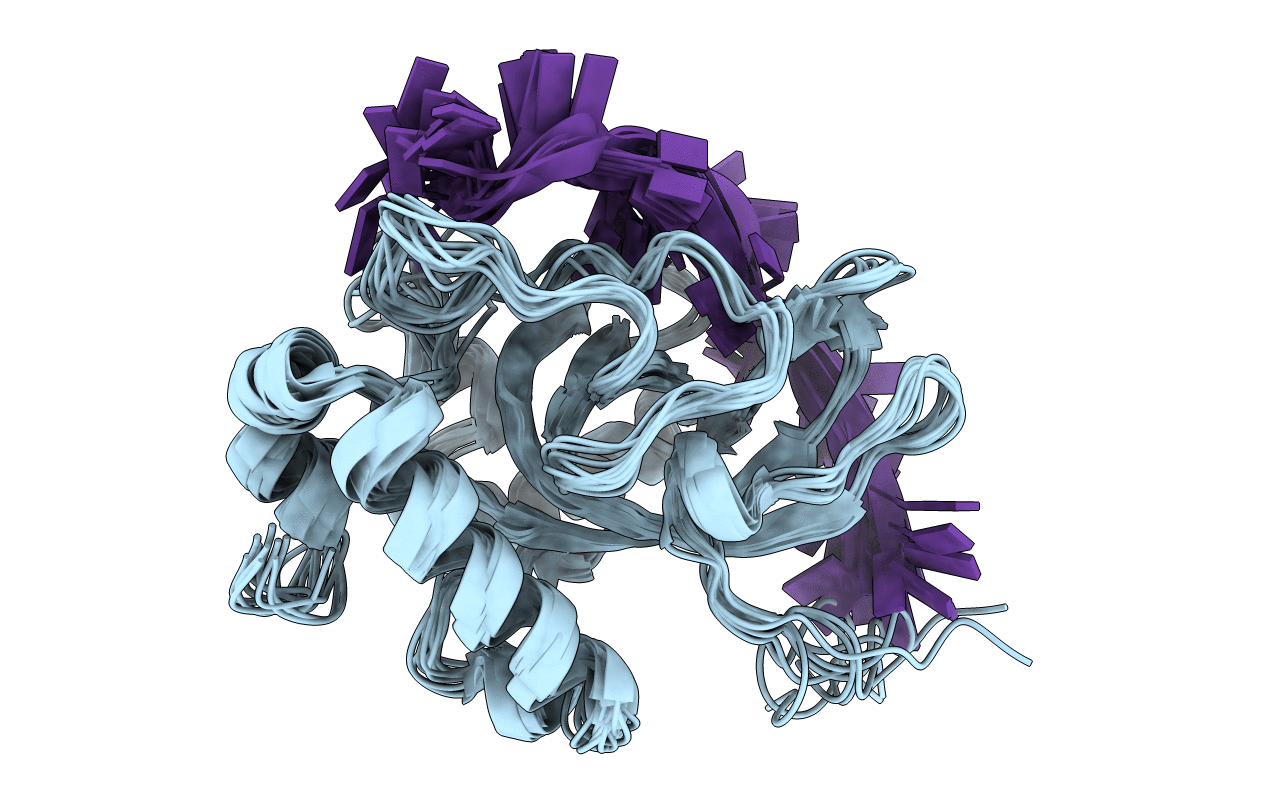
Deposition Date
2004-01-14
Release Date
2004-05-04
Last Version Date
2024-05-22
Entry Detail
PDB ID:
1S40
Keywords:
Title:
SOLUTION STRUCTURE OF THE CDC13 DNA-BINDING DOMAIN COMPLEXED WITH A SINGLE-STRANDED TELOMERIC DNA 11-MER
Biological Source:
Source Organism:
Saccharomyces cerevisiae (Taxon ID: 4932)
Host Organism:
Method Details:
Experimental Method:
Conformers Calculated:
100
Conformers Submitted:
10
Selection Criteria:
structures with acceptable covalent geometry, structures with the lowest energy


